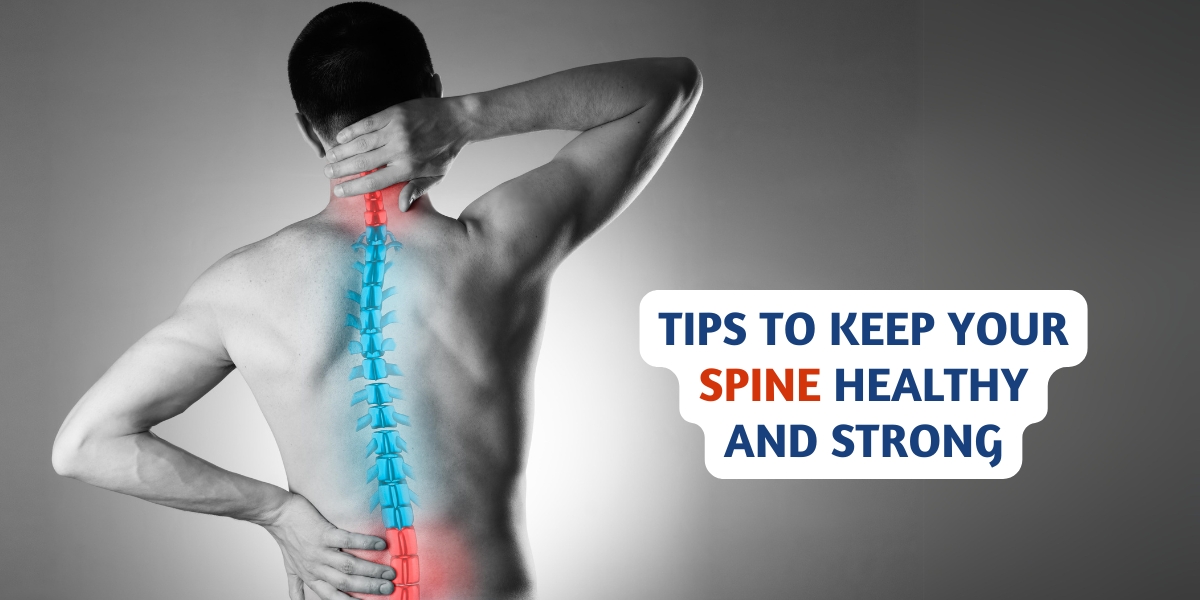Maintaining a healthy spine is essential for overall well-being. The spine plays a crucial role in supporting the body’s structure, facilitating movement, and protecting the spinal cord. A healthy spine ensures proper posture, helps prevent injuries, and reduces the risk of chronic back pain. Whether you’re an athlete, an office worker, or a senior adult, taking steps to care for your spine can improve your quality of life.
1. Practice Proper Posture
Posture is one of the most important factors in maintaining a healthy spine. Poor posture, especially while sitting or standing for long periods, can strain the spine and lead to discomfort or injury. Here are a few key tips to ensure proper posture:
- Keep your back straight when sitting and ensure your lower back is supported.
- Avoid slouching or leaning forward, which can put unnecessary pressure on your spine.
- When standing, keep your shoulders back, your chest lifted, and your weight evenly distributed on both feet.
- Use an ergonomic chair if you work at a desk for long hours. Ensure your computer screen is at eye level to avoid straining your neck.
By maintaining good posture, you can relieve the pressure on your spine and reduce the risk of developing back pain.
2. Stay Active and Exercise Regularly
Regular physical activity is key to maintaining spine health. Exercise helps strengthen the muscles that support the spine, improves flexibility, and enhances overall spinal function. Here are some exercises that promote spinal health:
- Core strengthening exercises: A strong core supports the spine and reduces the risk of injury. Incorporate exercises like planks, bridges, and leg raises to strengthen your abdominal and back muscles.
- Stretching: Regular stretching helps maintain flexibility in the spine and surrounding muscles. Focus on stretches that target your lower back, hamstrings, and hip flexors.
- Low-impact aerobic activities: Activities such as swimming, walking, or cycling are great for improving cardiovascular health without placing excessive strain on your spine.
- Yoga and Pilates: Both yoga and Pilates focus on core strength, flexibility, and alignment, which can greatly benefit spinal health.
A consistent exercise routine can prevent the stiffness and discomfort often associated with a sedentary lifestyle.
3. Lift Objects Correctly
Improper lifting techniques can lead to serious spine injuries, such as herniated discs or muscle strains. To protect your spine, follow these guidelines when lifting heavy objects:
- Bend at your knees, not your waist, to pick up objects from the ground. This ensures your legs do most of the work, reducing the strain on your back.
- Keep the object close to your body as you lift. The farther away the object is from your body, the more stress it places on your spine.
- Avoid twisting your body while lifting. Instead, move your entire body in the direction you’re lifting.
- If an object is too heavy to lift comfortably, ask for assistance or use a dolly.
By practicing safe lifting techniques, you can avoid acute back injuries and long-term spinal problems.
4. Maintain a Healthy Weight
Carrying excess body weight, especially in the abdominal region, can put additional strain on the spine. This extra weight shifts the body’s center of gravity and forces the spine to compensate, leading to misalignment and increased pressure on the vertebrae and discs. Over time, this can result in chronic back pain, poor posture, and increased risk of injury.
To maintain a healthy weight, follow a balanced diet rich in fruits, vegetables, lean proteins, and whole grains. Regular physical activity, as mentioned earlier, is also essential in managing weight and supporting spinal health.
5. Stay Hydrated
Hydration is often overlooked in spine health, but it plays a critical role in keeping your spine strong. The discs in your spine, which act as cushions between the vertebrae, are made up of a high percentage of water. Proper hydration helps maintain the flexibility and elasticity of these discs, reducing the risk of disc degeneration and injury.
Make it a habit to drink plenty of water throughout the day to keep your spine and overall body hydrated.
6. Sleep in the Right Position
Your sleeping position can have a significant impact on the health of your spine. To ensure proper alignment and minimize strain, consider the following sleep tips:
- Sleep on your back or side. These positions are generally better for spinal health than sleeping on your stomach, which can strain the neck and lower back.
- Use a pillow that supports the natural curve of your neck. If you sleep on your back, a smaller pillow is recommended. A firmer pillow that fills the space between your head and the bed is ideal for side sleepers.
- Invest in a mattress that provides adequate support. A medium-firm mattress is often the best option for maintaining spinal alignment.
Choosing the right sleep position and mattress allows you to wake up feeling refreshed without back pain.
7. Quit Smoking
Smoking has a negative effect on many aspects of your health, and your spine is no exception. Smoking reduces blood flow to the discs in your spine, which can lead to faster disc degeneration. Additionally, nicotine interferes with the body’s ability to absorb calcium, increasing the risk of osteoporosis and weakening the bones in the spine.
Quitting smoking can improve blood circulation to the spine, promote disc health, and reduce the risk of back pain and spinal injuries.
8. Manage Stress
Stress can have a direct impact on your spine and overall musculoskeletal system. When you’re stressed, your muscles tend to tense up, especially in the neck, shoulders, and back. Over time, chronic tension in these areas can lead to spinal misalignment and back pain.
To manage stress and protect your spine, consider incorporating relaxation techniques such as deep breathing, meditation, or regular massages into your routine. These activities can help relax your muscles, reduce tension, and promote spinal health.
9. Wear Proper Footwear
The shoes you wear can affect your posture and, consequently, the health of your spine. Wearing shoes that provide inadequate support can lead to misalignment in your hips and spine, resulting in back pain. Here are a few tips for choosing the right footwear:
- Choose shoes with good arch support to help maintain proper posture.
- Avoid wearing high heels or shoes with flat soles for extended periods.
- Opt for shoes with cushioned soles to reduce the impact on your spine when walking or standing.
Investing in high-quality, supportive shoes can make a big difference in maintaining spinal alignment and preventing discomfort.
10. Get Regular Check-ups
Finally, it’s important to schedule regular check-ups with a healthcare professional, particularly if you’re experiencing back pain or discomfort. A physiotherapist, chiropractor, or orthopedic specialist can assess the health of your spine and provide recommendations tailored to your needs. Early detection and treatment of spinal issues can prevent more serious problems in the future.
Dr. Vinil Shinde – Leading Orthopedic Surgeon in Kothrud & Bavdhan Pune
Dr. Vinil Shinde is a trusted Orthopedic doctor in Kothrud, Pune, known for providing specialized care in diagnosing and treating joint, bone, and muscle issues. With a focus on improving mobility and reducing pain, Dr. Vinil Shinde helps patients recover from conditions like arthritis, fractures, and sports injuries. Whether it’s managing chronic pain or addressing acute injuries, he emphasizes personalized treatment plans, including non-surgical options, physiotherapy, and, when necessary, surgical interventions. Dr. Shinde is committed to improving the quality of life for his patients through expert orthopedic care.




